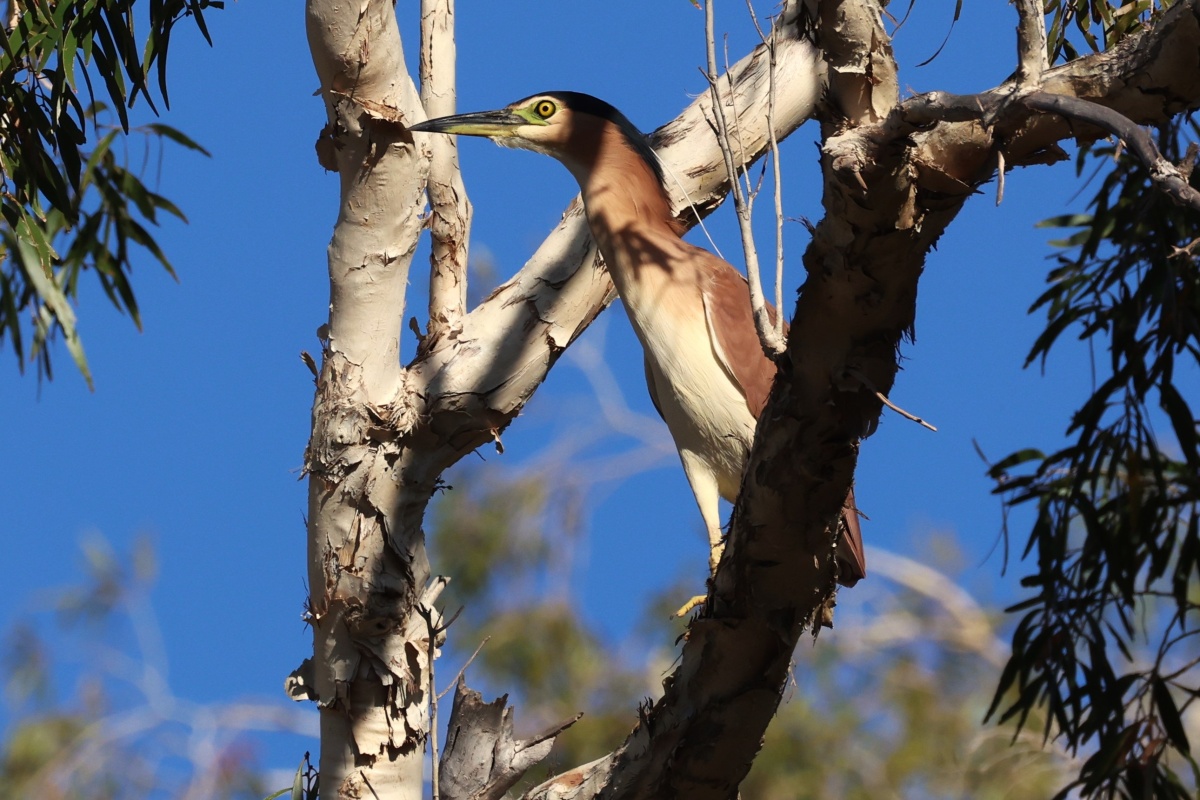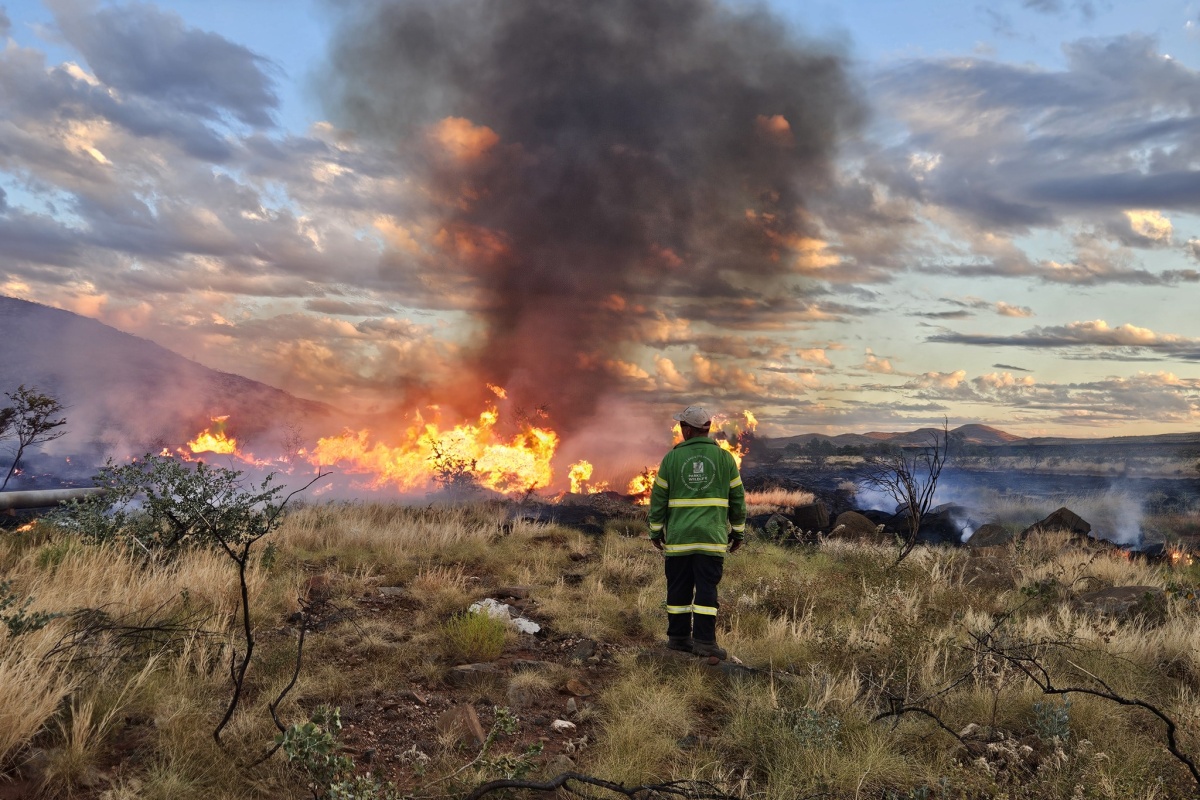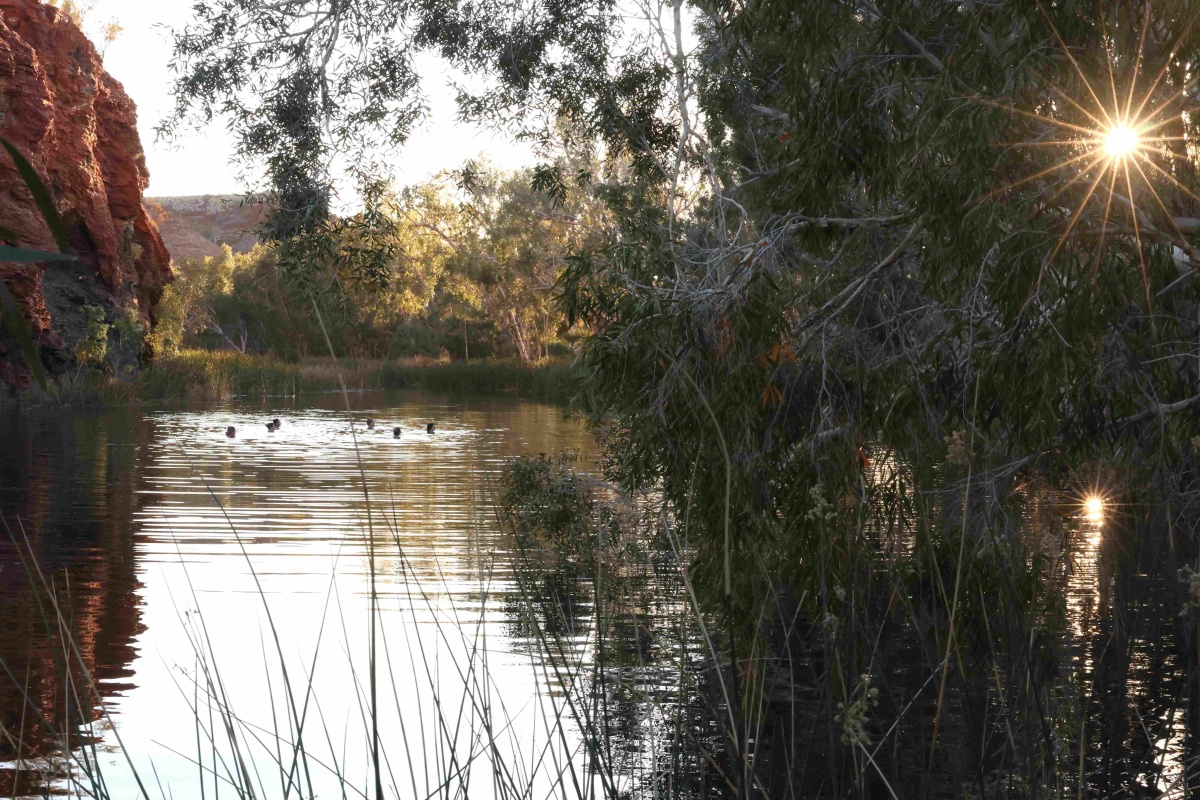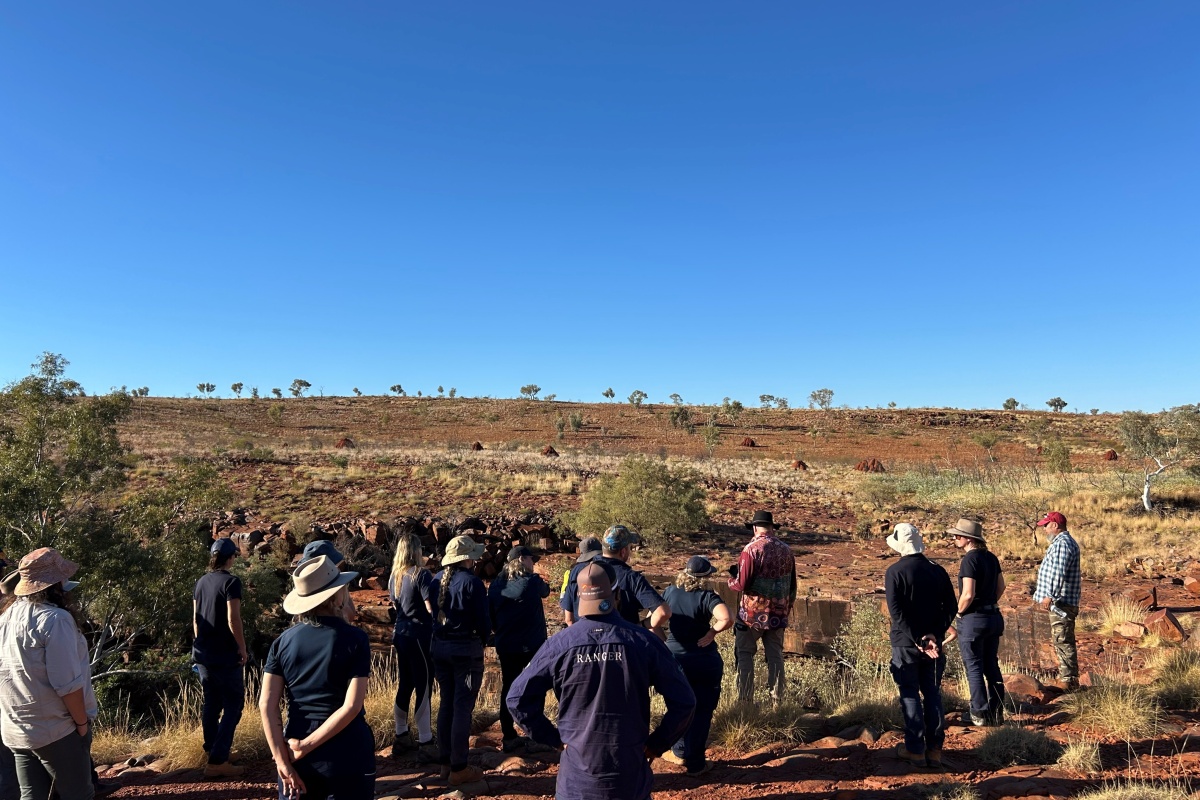The Pilbara is a place of extraordinary ecological and cultural significance. It is home to rare species like the northern quoll (Dasyurus hallucatus), Pilbara leaf-nosed bat (Rhinonicteris aurantia—Pilbara form), western pebble-mound mouse (Pseudomys chapmani) and Pilbara olive python (Liasis olivaceus barroni), as well as sacred sites that have been cared for by Traditional Owners for tens of thousands of years.
Yet, it’s also a region central to Australia’s economy, rich in mineral resources and pastoral activity. Balancing these competing values is no small or easy task. The Pilbara Conservation Project is showing that it’s not only possible – it’s powerful.
Coordinated by the Parks and Wildlife Service from the Department of Biodiversity, Conservation and Attractions, this Rio Tinto-funded project is guided by a vision to work closely with the Traditional Owners of the project lands. The project aims to partner with Traditional Owners including Banjima, Ngarluma, Wintawarri Guruma, Yindjibarndi and Yinhawangka, to better conserve the unique landscapes and biodiversity of Karijini and Millstream Chichester national parks.
By integrating science, traditional knowledge and on-ground action to manage fire, weeds and feral animals, the Pilbara Conservation Project is protecting ecosystems, creating job opportunities and strengthening cultural ties to Country.
In just two years, the project has made significant strides:
- Advisory committees have been formalised with two Traditional Owner groups to guide conservation and land management over the national parks.
- A dedicated project team integrates scientific research with land management expertise.
- Vegetation and fire scar mapping is helping to inform prescribed burn planning.
- A research program is underway to better understand fire ecology and protect vulnerable native species.
Stronger together for Country
Protecting native wildlife and ecosystems from the growing threat of invasive species is a key priority for the project.
The project seeks to manage feral animal populations that cause significant habitat damage, including trampling vegetation and polluting water sources through fouling and sedimentation—threatening native species such as the Pilbara olive python.
Through feral animal monitoring and control the project is helping to restore balance across Karijini and Millstream Chichester national parks.
Weed control is also a priority. Banjima Traditional Owner May Byrne, whose property borders Karijini, recently partnered with project staff to remove weeds such as stinking passion flower (Passiflora foetida).
“An advisory committee has been established in partnership with the Banjima people to support conservation and land management in Karijini National Park, guided by traditional knowledge” said Project Manager Teagan Johnston.
“Supporting May was a practical way to protect biodiversity. It’s inspiring to see what’s possible when we work side-by-side to care for Country.”
FERAL ANIMAL AND WEED CONTROL
Achievements is feral animal and weed control in 2024 include:
- 1324 hectares of priority weeds treated in sensitive areas
- 400 hours of on-ground treatment targeting nine weed species
- 480 date (Phoenix dactylifera) and cotton (Washingtonia filifera) palms removed
- 313 feral animals removed
Fire science takes flight
The partnership between science and fire management is a key component of the Pilbara Conservation Project’s strategy to protect biodiversity in Karijini and Millstream Chichester national parks.
The project team are undertaking ‘right way fire’ (mosaic or patchy) landscape-scale prescribed burns in both parks, based on how Traditional Owners have managed the landscape for tens of thousands of years, and quantifying its effectiveness in reducing large-scale bushfires across the landscape.
Drawing on expertise in fire ecology and behaviour, the project integrates scientific research to better understand fire dynamics and guide effective, landscape-scale fire management across the region.
The fire science component of the project is a complex and evolving area of work that explores:
- how fire influences the unique flora and fauna of Karijini and Millstream Chichester national parks;
- how fire behaves differently across different vegetation types with varying fire histories; and
- how management strategies can be adapted to align with local ecology while reducing large wildfires.
Data is collected by combining remote sensing, spatial analysis and field work to produce fire scar mapping and vegetation land unit mapping.
A typical day for research scientists may involve establishing research and monitoring sites, conducting flora surveys, deploying camera traps and using drones to capture aerial imagery of remote areas.
DBCA research scientist Matt Chick works closely with fire and land managers, Traditional Owner groups and other scientists to ensure research translates into action.
“The fire management occurring in the region is progressive and traditional at the same time, making it a unique research opportunity,” Matt said.
"It is my hope that this research will support on-ground decisions that help maintain habitat quality, reduce destructive bushfires and ensure long-term ecological resilience.
Long-term monitoring is key to successful landscape-scale conservation. The longer we can collect data, the more responsive and robust our research is to help inform our fire management practices in the Pilbara.”
‘Right-way’ fire – cool season prescribed burning
Prescribed burning achievements include:
- Aerial and ground prescribed burning treating nearly 379,000 hectares in Karijini and Millstream Chichester national parks and surrounding unallocated Crown land in 2024.
- Heli-torch trial for strategic burning at Millstream Chichester National Park.
- Ground burns carried out with Traditional Owner rangers.
Improved understanding through science
Achievements in science include:
- Completion of Fire Science Project Plan comparing two fire management strategies and improved knowledge of spinifex fire ecology.
- Fire scar maps updated using satellite imagery and remote sensing and spatial analysis statistics of fire regimes.
- 90 camera traps deployed as part of a collaborative PhD project between Charles Sturt University and DBCA investigating the influence of fire on northern quoll movement ecology.
- Detailed vegetation mapping of both parks almost completed.
Walking on Country together
A two-day cultural immersion on Yindjibarndi Country with Juluwarlu Group Aboriginal Corporation begins with a traditional smoking ritual to clear lingering bad spirits and energy.
The immersion was attended by a team of DBCA and Rio Tinto staff, partaking in a once-in-a-lifetime journey with Juluwarlu Group Aboriginal Corporation as part of the Pilbara Conservation Project.
A water ceremony was also conducted, a ritual performed by scooping water from a pool or other water source into the mouth and sprayed back out before calling out to Country:
“Ngurra gangganggarrinha yingu buluyugayi birbiwarni wa nggayi thurdud mirda nyantharri biyiyarri…”
“Country, we come here to visit you and talk straight, please don’t get angry and harm us.”
The team were privileged to visit significant cultural sites and learn stories that have been passed down for generations.
The team reported their time at Manggurla Thalu, a fertility site, and Biigunha with its stunning rock engravings, was truly enriching. They also visited Birlinbirlin, a meeting place for big law ceremonies and where neighbouring tribes use to gather.
Research Officer Jane Chapman from DBCA said “It was a real privilege to have participated in the cultural immersion training.
“Everyone involved, in particular Michael and Lorraine, were incredibly generous with their time and knowledge. It was an unforgettable experience and I am grateful to have experienced Yindjibarndi Country from a new perspective.”
Working with Traditional Owners
Milestones included:
- Advisory committees
Established with Banjima Native Title Aboriginal Corporation and Yindjibarndi Aboriginal Corporation to discuss park management and identify issues and opportunities for working together in Karijini and Millstream Chichester. - Ranger training
Delivered through the Pilbara Ranger Network, the project supported fauna monitoring and fire management techniques. - On-ground support
Two Yindjibarndi rangers employed casually by the Parks and Wildlife Service to assist with tasks including prescribed burning.
The road ahead
The Pilbara Conservation Project is more than a regional initiative—it’s a blueprint for how conservation can be done differently.
By connecting science with traditional knowledge, and fostering partnerships between government, industry and Traditional Owners, it’s setting a new standard for environmental stewardship.
This project reminds us that the most powerful solutions come from working together. Conservation is not just about protecting land—it’s about building relationships, honouring culture, and shaping a sustainable future.
Through meaningful engagement and the sharing of valuable insights, we are fostering enduring partnerships that connect conservation, culture, and industry.
For the latest updates, visit Pilbara Conservation Project | Department of Biodiversity, Conservation and Attractions
For partnership opportunities, email pilbaraconservationproject@dbca.wa.gov.au




